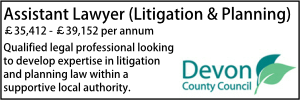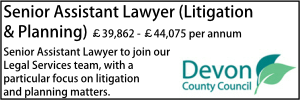Councils express concern at impact of nutrient and water neutrality on housing supply, criticise uncertainty over offset schemes
- Details
More than seven per cent of all of England’s planned house building cannot go ahead due to river pollution levels, with further house building banned in other areas because of low water levels, analysis by the Local Government Association has suggested.
The LGA described the research, Nutrient and water neutrality: The impact of environmental protections on housing supply, as “a wakeup call on the need to protect our special habitats” but said that limiting new developments alone would not be enough to improve the state of English rivers. This was because the majority of pollution was caused by agriculture and water companies, it argued.
The Association said councils wanted to work with the Government, water companies and farmers to clean up rivers and reduce pollution to levels required by the Habitats Directive law. “This can only be done by reducing pollution at source and delivering sustainable production of food and clean water.”
The LGA analysis said 23 councils had more than 90% of likely house building areas impacted by the law. Forty councils meanwhile have more than a quarter of their likely house building impacted. Almost a third of building in the whole of the Northeast of England is impacted, it added.
The Association said: “Together around 20,000 new homes a year will not be able to be built unless developers and councils can prove they will produce no additional pollution, and with few quick fixes the numbers of homes prevented from being built could hit 100,000 in the coming years.”
It called the current system for putting in place nature-based schemes to offset the environmental impact of new housing so that developments can go ahead “challenging, lengthy and uncertain”.
Cllr David Renard, environment spokesperson for the LGA said: “Councils want safe, clean, thriving natural environments alongside the sustainable development of housing, growth and jobs.
“It is concerning and frustrating that pollution levels in some rivers have reached a point to trigger bans on building around 20,000 new homes each year, over seven per cent of all England’s likely new house building.
“People need homes, schools and doctors’ surgeries, and people also need a safe and clean environment.”
Cllr Renard added: “Councils are working tirelessly to enable house building while upholding high environmental standards. However, they cannot achieve this alone. We need to reduce pollution at source, which predominantly originates from water treatment and farming.
“The Government and its agencies, house builders, the agricultural sector and water companies must all come together with councils to find short-term solutions while doing everything we can to reduce pollution at source."
Sponsored articles
Walker Morris supports Tower Hamlets Council in first known Remediation Contribution Order application issued by local authority
Unlocking legal talent
Senior Lawyer - Planning, Property & Contracts Team
Lawyer (Planning and Regulatory)
Principal Lawyer - Planning, Property & Contract
Contracts Lawyer
Legal Director - Government and Public Sector
Locums
Poll












































